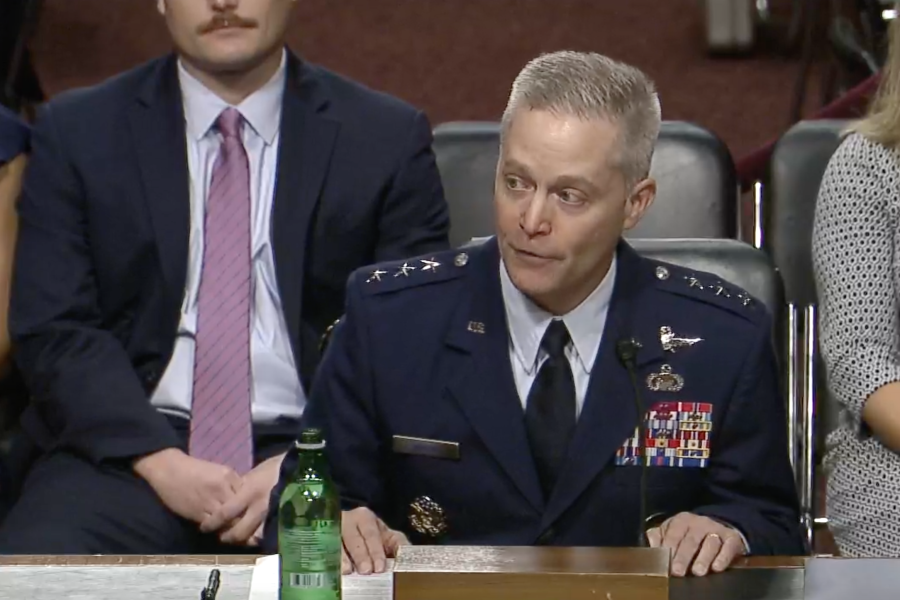Testifying before the Senate on July 20, the Air Force general nominated to head both the National Security Agency and U.S. Cyber Command offered a full-throated endorsement of the “dual-hat” arrangement in which the same official leads both organizations.
“The signals intelligence and the cyber environments are overlapping,” said Air Force Lt. Gen. Timothy Haugh, who has been tapped to pin a fourth star and become the first Airman to lead CYBERCOM since its establishment in 2010.
“Having a single leader with the ability to align the capabilities of NSA and Cyber Command gives us greater speed and agility,” he added. “It also allows us to, at the beginning of planning, be very considerate of how do we protect intelligence sources while still being able to position to produce the outcomes.”
For years now, experts, lawmakers, and intelligence and defense officials have debated splitting leadership of the two organizations. Proponents of the move say the NSA, a government spy agency that is part of the Department of Defense, and U.S. Cyber Command, which runs military cyber operations, are too big and important to be led by one person. They also claim tying the two together risks exposing NSA’s intelligence-gathering tools and operations.
Those in favor of the “dual-hat” arrangement like Haugh point to overlapping mission sets and close collaboration between the two. Originally, CYBERCOM also needed the NSA’s technical expertise and infrastructure as it developed.
Over time, Cyber Command has carved out a bigger role for itself. Originally part of U.S. Strategic Command, it became an independent combatant command in 2018. While the NSA focuses on gathering and analyzing signals intelligence, Cyber Command has stepped up its offensive operations, especially to safeguard U.S. elections under current head Gen. Paul Nakasone.
That approach has been dubbed the so-called “defend forward” in which the U.S. has defended itself by taking on U.S. adversaries, particularly Russian troll farms. Described as a “campaign plan” to reporters in late 2022 by Nakasone, the hunt-forward plan was used to protect U.S. elections in 2018, 2020, and 2022 and to safeguard U.S. allies.
Given Cyber Command’s growing mission, Secretary of Defense Lloyd J. Austin III and Director of National Intelligence Avril Haines commissioned a report in 2021 to look into the dual-hat arrangement, led by former Chairman of the Joint Chiefs of Staff retired Gen. Joseph F. Dunford Jr. That report found “substantial benefits that present compelling evidence for retaining the existing structure.”
Nakasone has voiced his support for that finding, and Haugh, who currently serves as his deputy, echoed his boss. Prior to his current role, Haugh served as commander of the 16th Air Force (Air Forces Cyber).
He also previously served as commander of the Cyber National Mission Force at CYBERCOM, its “action arm” at Fort George G. Meade, Md.
When asked if he foresaw a future in which cyber operations would evolve to the point where the NSA and Cyber Command should have separate leaders, Haugh said he expects the current arrangement to remain mutually beneficial.
“I’ve now worked in each side of these organizations,” Haugh told SASC ranking member Roger Wicker (R-Miss.) “How we partner and be able to take the guidance from a single leader becomes effective in our response.”
“I think that would be very difficult to replicate in a different configuration,” Haugh added.
